Is the home nucleic acid quick test accurate or not?
Original pediatric doctor Yan, pediatric doctor Yan
Since the second half of 2023, Meituan and JD.COM Platform have carried out rapid home nucleic acid detection in some cities. At present, the testing items are as follows:
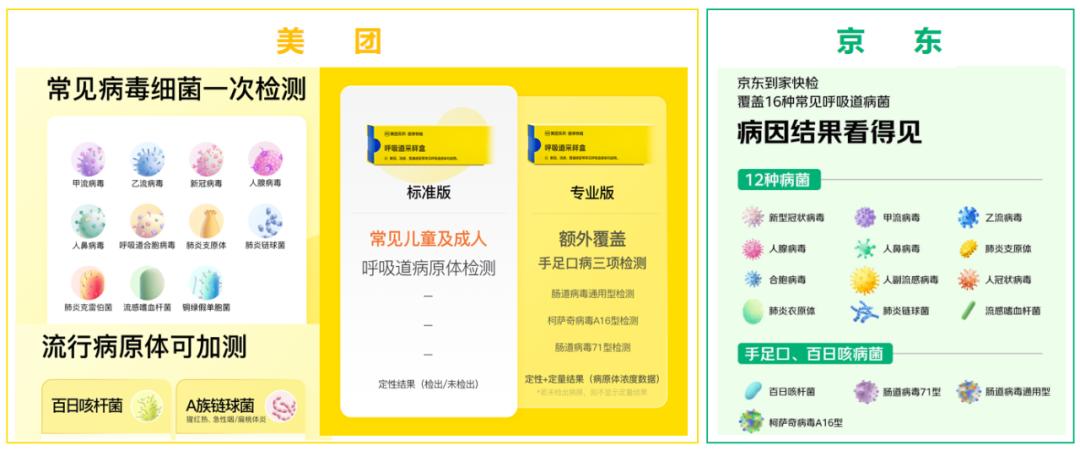
There are always parents who ask me: Is the quick test of nucleic acid at home accurate or not?
In fact, doctors and colleagues and I often discuss this issue. Our feeling is that sometimes it is accurate and sometimes it is not.
Through nearly half a year’s contact, we found that the rapid detection of nucleic acid at home is helpful to analyze the cause of upper respiratory tract infection in the community. In particular, the newly added pertussis test is convenient for early investigation and is really useful.
However, the detection rate of individual pathogens is doubtful, and some testing items seem unnecessary.
Here are two valuable cases. These two children not only did a quick home nucleic acid test, but also measured a very accurate tNGS (targeting high-throughput sequencing), which can be compared and analyzed.
As always, thank parents for their consent before sharing.
01
Case 1
A 7-year-old child saw a doctor at 12 noon on June 21st. The medical history is as follows:
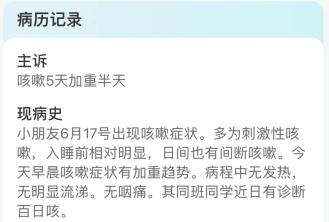
When I saw a doctor, I had been coughing for 5 days. Because his deskmate was recently diagnosed with whooping cough, according to the clinical diagnosis standard B of CDC in the United States, if other diseases are excluded, whooping cough can be clinically diagnosed without laboratory tests.
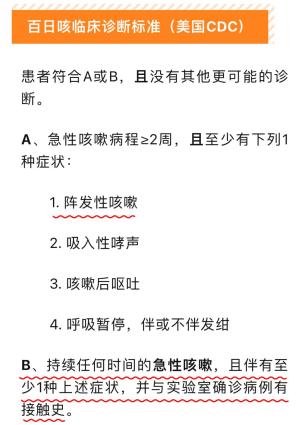
Considering the 14-day course of antibiotic treatment and whether the family members take post-exposure prevention, after discussion with parents, it was decided that the presence of pertussis should be determined by rapid examination in JD.COM, and the drug-resistant pertussis infection should be evaluated by targeted sequencing. The specific plan is as follows:
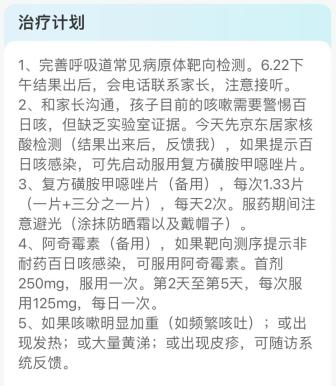
At 15: 16 (more than 2 hours after sampling), the quick test results show that:

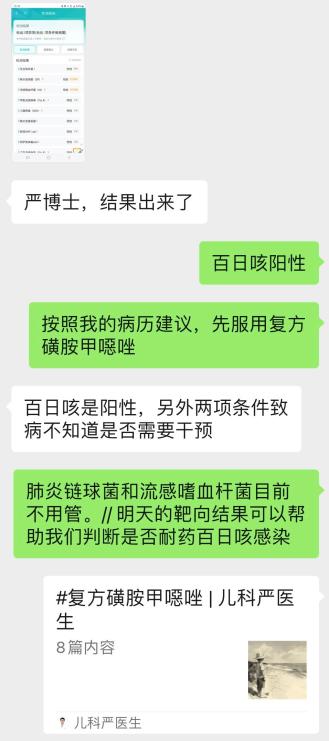

At noon on June 22nd (the second day after seeing a doctor), targeted sequencing showed that:
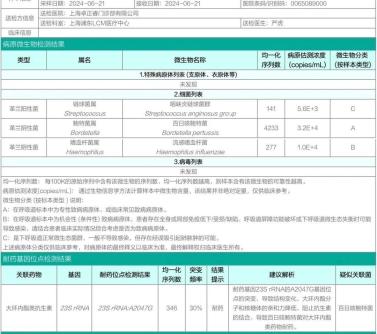
Through this case, we can draw the following conclusions:
1. The Bordetella pertussis detected this time is accurate (confirmed by sequencing).
2. The Streptococcus pneumoniae strain detected this time is false positive (negated by sequencing).
Why is there a false positive?
It is speculated that the primer design for rapid detection of Streptococcus pneumoniae in laboratory has defects and insufficient specificity, and Streptococcus angina with similar nucleic acid sequence is mistaken for Streptococcus pneumoniae.
3. The Haemophilus influenzae detected this time is accurate (confirmed by sequencing).
4. Targeted sequencing can identify whether there is drug resistance gene mutation in Bordetella pertussis, which is convenient for drug selection.
Reminder again: We must seize the opportunity to treat pertussis, because at present, drug-resistant pertussis is the main epidemic in China, so compound sulfamethoxazole is recommended as the first choice for empirical treatment.
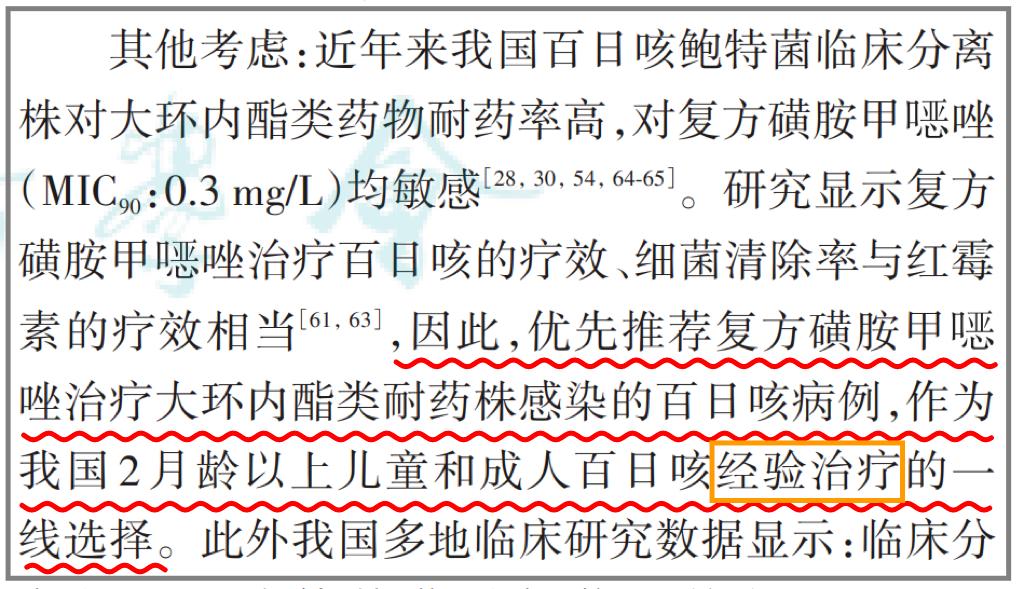
▲ Guidelines for diagnosis, treatment and prevention of whooping cough in China (2024 edition)
02
Case 2
3 years and 7 months, I saw a doctor on July 13th (Day 2), and my medical history is as follows:
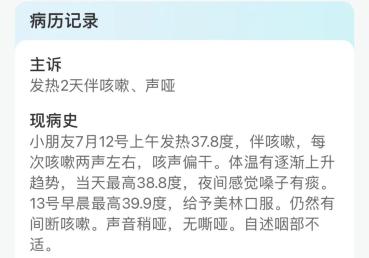
Initial diagnosis of acute laryngitis (mild). Because the symptoms suggest viral infection (especially parainfluenza virus), no pathogenic test was made at the first diagnosis.
The children returned home with high fever that day, and the parents made a quick inspection of the US delegation. The results are as follows:
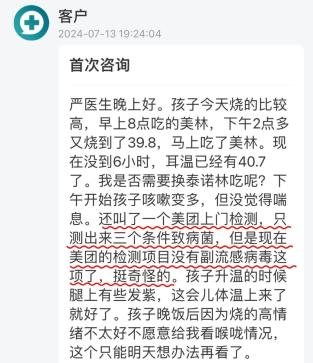
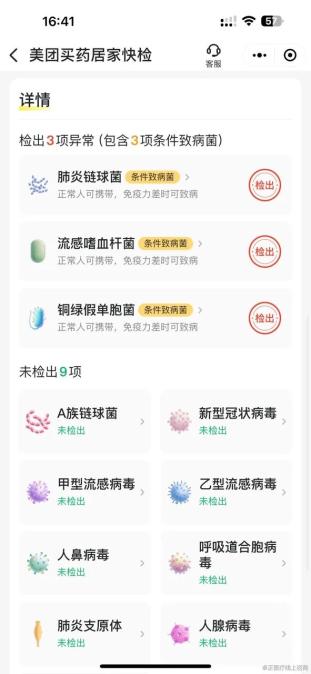
You see, the US Mission has detected three kinds of "conditional pathogens" quickly, but there is no parainfluenza virus detection project, which makes parents feel strange.
In the next few days, the progress of this child’s illness is worrying.
On the 14th (Day 3), repeated high fever, the highest is 40.1℃.
On the 15th (Day 4), the highest temperature was 40.7℃. I went back to the clinic for targeted sequencing.
On the 16th (Day 5), sequencing showed that:
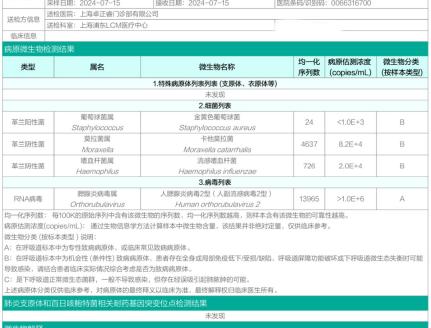
On the 16th (Day 5), the child developed yellow tears. His body temperature was 39.7℃ during the day and nearly 40.1℃ at 10 pm. My parents contacted me.
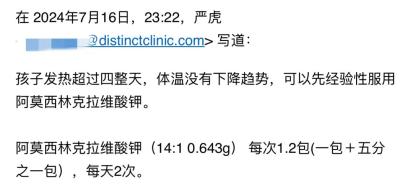
Combined with the sequencing results and the change of symptoms, I considered the virus combined with bacterial infection, and started amoxicillin and clavulanate potassium that night.
On the morning of the 17th (Day 6), the body temperature gradually dropped and pus increased. My temperature has been normal since the afternoon of the 17th.
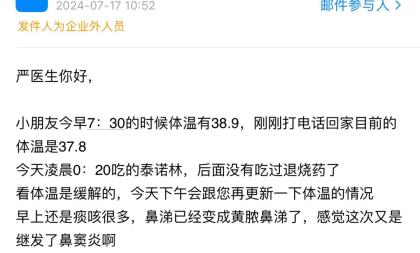
Through this case, we can draw the following conclusions:
1. The Streptococcus pneumoniae strain detected this time is false positive (negated by sequencing).
2. The Pseudomonas aeruginosa detected this time is false positive (negated by sequencing).
3. The Haemophilus influenzae detected this time is accurate (confirmed by sequencing).
4. The parainfluenza virus detected by sequencing is the pathogenic pathogen that causes the initial symptoms of children, but the detection project has been cancelled by Meituan (which has been kept by JD.COM Quick Inspection so far).
5. The sequencing results are helpful for judging the virus combined with bacterial infection, and this result is also the basis for my difficult decision to start antibiotic treatment at 11 o’clock on the 16th.
03
Is home nucleic acid testing accurate or not?
Any new thing can’t be perfect, there will always be some problems that need to be constantly improved and improved.
Since it is an improvement, it should be improved as possible.
For example, it is very good to add pertussis and group A streptococcus detection items to the home quick inspection.
However, the US Mission cancelled the parainfluenza virus detection and increased the detection of Pseudomonas aeruginosa and Klebsiella pneumoniae with low value, which is puzzling.
Pathogen detection is very important for the management of some infectious diseases, so we should have higher requirements, which is not too much.
If the test results are inaccurate, some pathogens will always be false positive, which will not only lead to patients’ (or their families’) worries, but also lead to wrong intervention, increase the doctor’s interpretation cost and waste the doctor’s time.
The two cases I cited earlier are just cases, which are not convincing enough. Whether home nucleic acid is accurate or not depends on a large sample survey.
We can collect enough home nucleic acid and targeted sequencing results, and then analyze the difference of pathogen positive rate; If a patient has done home nucleic acid and targeted sequencing at the same time, the control analysis is more valuable.
Ben WeChat official account plans to write a series of articles to discuss how to manage common upper respiratory tract infectious diseases by home quick check-up.
Here, I especially hope that the testing organization will make this product better. For example, quality control personnel should carefully analyze the test data, find out the reasons for the high detection rate of pathogens such as Streptococcus pneumoniae, resume the detection of parainfluenza virus, and cancel some unnecessary tests.
In order to make a more rigorous evaluation, we collect home nucleic acid test results from readers, and the requirements are as follows:
1. Provide a complete test report screenshot. If there are other pathogen detection reports (such as targeted sequencing or antibody detection results), they can also be provided together. Please cover the patient’s name.
2. Sampling sites (such as throat swab and nasopharyngeal swab) can be provided.
3. Can inform the patient’s age, main symptoms (such as fever, cough, runny nose) and city.
https://www.wenjuan.com/s/uuqEBnn/
Thanks for your support.

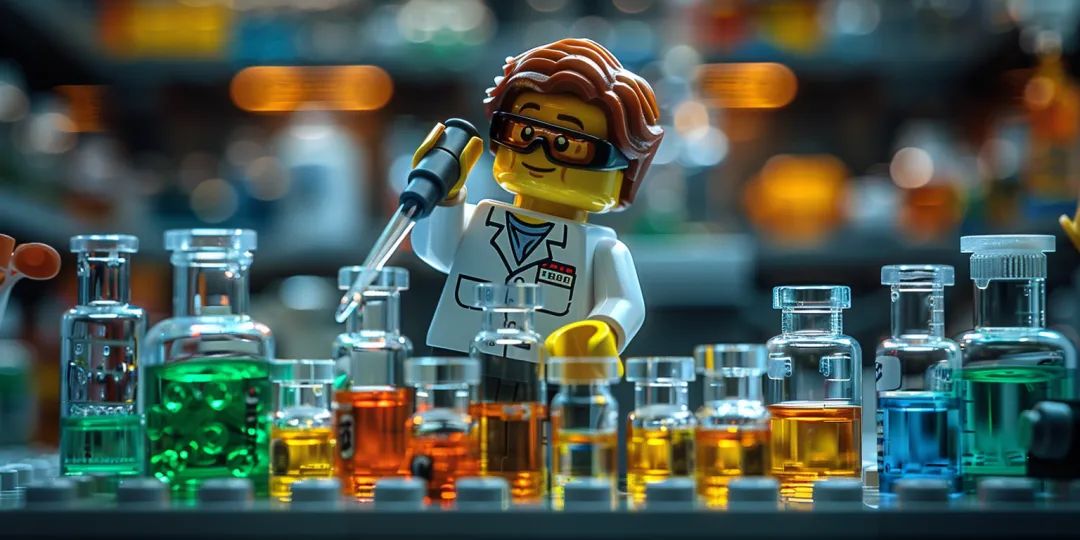
The pediatrician slides up to see the next one.
Original title: "Quick test of nucleic acid at home, is it accurate or not? 》
Read the original text